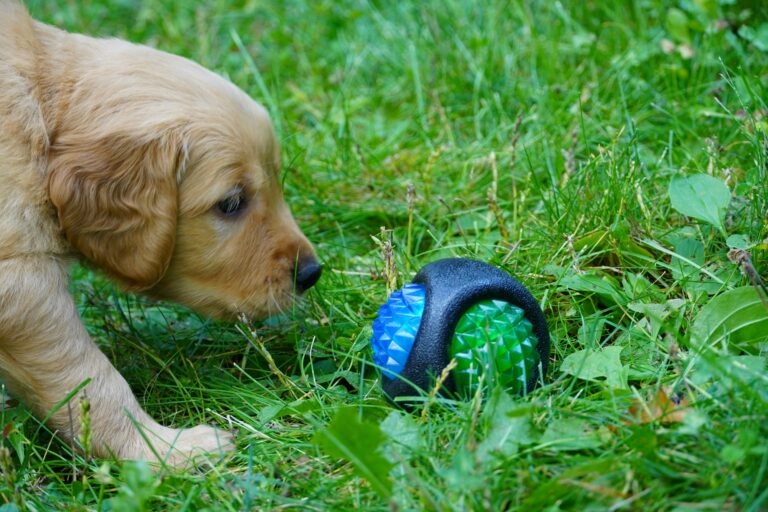Taking your tiny four-legged friend to the vet’s office can often be a stressful event, both for you and your pet. However, the skill of keeping small dogs calm during these visits is not as challenging as it seems. This post, “Calm Canines: Mastering the Art of Training Small Dogs to Stay Relaxed at the Vet’s Office,” will provide you with valuable strategies to reduce your pet’s anxiety. 🐕💕
In the upcoming sections, we will delve into understanding the causes behind your small dog’s anxiety and stress at the vet’s office. Knowing why your pup reacts a certain way is the first step towards finding the perfect solution. 🧐🔍
We will then proceed to discuss practical and easy-to-implement training techniques to help your dog stay calm. From desensitization practices to counter-conditioning strategies, we will cover various methods that cater to different dog personalities and anxiety levels. 🐶🧘♀️

Additionally, we will also shed light on how you can create a positive association with the vet’s office for your dog. This will include a range of tips, such as making your dog familiar with the vet’s office environment, rewarding good behavior, and utilizing calming aids. 👍🏼🎁
By the end of this post, you will be well-equipped with the knowledge and tactics to transform your small dog’s vet visits into a more pleasant experience. So let’s embark on this journey together towards ensuring the well-being of our furry friends. 🚀🐾
Understanding Canine Anxiety at the Vet’s
Canine anxiety at the vet’s office can be attributed to a variety of factors. The most common cause is the unfamiliar environment, filled with unfamiliar scents, sounds, and people. Additionally, dogs may associate the vet’s office with unpleasant experiences like vaccinations or invasive procedures. To manage this, it is vital to understand the signs of anxiety in your pet.
Dogs are highly sensitive to changes in their environment. The sterile smell of the clinic, the sounds of other distressed animals, and the presence of unfamiliar humans can all be overwhelming. Even a single negative experience can imprint a lasting memory, making future visits increasingly difficult.

Understanding these emotional triggers is the first step to creating a plan that will help your small dog stay calm and more accepting of necessary veterinary care. Recognizing the difference between mild nervousness and full-blown fear is also crucial, as each requires a slightly different approach.
Recognizing Signs of Anxiety
Dogs communicate their anxiety through body language and subtle behaviors that attentive owners can learn to spot quickly. Recognizing these signs allows early intervention before fear escalates into panic.
Common signs of anxiety include pacing back and forth, trembling, excessive panting even when not hot, and drooling. Some dogs may tuck their tails tightly between their legs, flatten their ears against their heads, or engage in avoidance behaviors like turning their bodies away from the source of stress. Others may resort to barking, growling, or even snapping if they feel trapped or cornered.
Subtle signs can sometimes go unnoticed. Lip licking, yawning (outside of tiredness), sniffing the ground repeatedly, and hypervigilance — where your dog constantly scans their surroundings — are often signs of unease. Learning your individual dog’s “stress signals” allows you to take action to help them before anxiety becomes overwhelming.
Implementing Techniques to Reduce Anxiety
There are several techniques you can employ to help your small dog stay relaxed at the vet’s office. These methods generally involve conditioning your dog to view the vet as a positive or neutral experience, rather than a negative one.
Effective anxiety management starts well before the vet appointment. Implementing proactive strategies at home prepares your dog for success when they face real-world challenges.
Desensitization
Desensitization involves gradual exposure to the stressor in controlled, non-threatening doses. For instance, take your dog to the vet’s office during non-appointment times to explore and sniff around the lobby. Allow your dog to move at their own pace without being forced to interact or perform. Reward positive behaviors with treats and praise, helping to associate the vet’s office with pleasant experiences.
Start by simply sitting in the car in the vet’s parking lot. Once your dog is comfortable, progress to walking inside the clinic entrance for a few minutes, then leaving. The goal is for your dog to experience the environment without anything unpleasant happening, breaking the association between the clinic and negative experiences.
Multiple short visits spaced over days or weeks are often more effective than a single long exposure. Gradual, positive exposures build resilience and confidence.
Counter Conditioning
Counter conditioning focuses on changing your dog’s emotional response to a stimulus. If your dog previously felt fear at the vet, the goal is to create a new emotional connection — one based on good things happening in that context.
Pair the trip to the vet with a highly valued reward, like a favorite treat or toy. Use cheese, chicken, or another “super treat” that your dog loves but only receives during vet-related experiences. The presence of these high-value rewards helps to replace fear or anxiety with positive anticipation.
For example, every time your dog enters the clinic waiting area without showing signs of stress, immediately reward them. Over time, your dog will associate being at the vet with receiving rewards rather than feeling fear.
Practicing Handling Exercises at Home
Handling exercises at home can prepare your dog for being touched and examined by strangers, which is a significant source of stress during vet visits.
Start by gently touching your dog’s paws, ears, tail, and mouth for short periods, always rewarding calm behavior with treats and praise. Gradually extend the time and pressure you apply, mimicking what a vet might do during an exam.
Incorporate pretend medical checks into your routine. Use a soft cloth to simulate ear cleaning, touch your dog’s limbs as if examining joints, and look into their mouth. The more normal these experiences feel at home, the less alarming they will seem in a clinical setting.
Building Positive Associations with Travel
Travel anxiety can sometimes worsen a dog’s vet-related stress. If your dog dislikes the car ride to the clinic, they arrive already on edge.
Work on building positive associations with car rides. Begin by simply sitting in the car with your dog and offering treats without going anywhere. Progress to short drives around the block, rewarding calm behavior.
Once your dog is comfortable in the car, occasionally drive them to positive destinations like a park or a friend’s house instead of always going to the vet. This prevents your dog from associating car rides exclusively with unpleasant experiences.
Creating a Vet Visit Ritual
Having a predictable “vet visit ritual” can help your dog feel more secure. This might include a special treat they only receive on vet days, a calm pre-visit walk, or playing a favorite game before heading out.
Consistency breeds confidence. Following the same steps each time helps signal to your dog that the experience is manageable and familiar, reducing the fear of the unknown.
The Power of Scent Therapy
Dogs experience the world largely through their noses. Calming scents can influence their emotional state in powerful ways.
Consider using calming pheromone sprays like Adaptil, which mimic the scent of a mother dog comforting her puppies. You can spray the inside of your car, the dog’s carrier, or even a bandana your dog wears on the way to the vet.
Some owners also find success with lavender-based calming sprays, but always consult your vet first to ensure any products you use are safe for your particular dog.
Choosing the Right Carrier or Harness
For tiny breeds, the right carrier can make a huge difference. Choose a well-ventilated, cozy carrier that feels like a safe den rather than a trap.
Let your dog become familiar with the carrier at home by leaving it open and placing treats or toys inside. Encourage your dog to enter and exit freely, removing any sense of confinement-related fear.
Alternatively, a well-fitted harness can make handling easier during vet visits. It provides better control and comfort compared to a collar, which might increase stress by putting pressure on the neck.
Preparing Mentally as a Pet Owner
Your emotional state significantly impacts your dog’s reactions. Dogs are masters at reading human body language and emotions. If you feel nervous, your dog will pick up on those signals and mirror your anxiety.
Practice deep breathing techniques before and during your vet visit. Approach the experience calmly and positively, using a confident tone of voice and relaxed posture.
Visualization techniques can also help. Picture the vet visit going smoothly before you even leave home. Mentally rehearsing a positive outcome can shift your mindset and, in turn, influence your dog’s behavior.
Communicating with Your Veterinarian
Veterinarians and their staff want to make visits as low-stress as possible for their patients. Communicate openly about your dog’s anxiety and any strategies that help.
Some clinics offer “happy visits” — short, non-medical visits where your dog can explore the clinic, receive treats, and interact with the staff in a stress-free way.
Requesting appointments at less busy times of day, such as early mornings, can minimize waiting room chaos and reduce exposure to stressed animals, improving your dog’s experience.
Use of Tools and Aids
Tools and aids can also help alleviate anxiety in small dogs. These can be physical aids or items with calming effects.
Calming Wraps
A calming wrap or anxiety wrap is a tool that applies gentle, constant pressure on a dog’s body, producing a calming effect. It works similarly to swaddling an infant and can reduce anxiety in dogs.
Pheromone Sprays
Pheromone sprays replicate the natural calming pheromones produced by mother dogs to soothe their puppies. When used correctly, these sprays can help your dog feel safe and relaxed.
Role of Training and Socialization
Training and socialization play a key role in ensuring your small dog remains calm at the vet’s. Start training and socializing your dog at a young age to make him comfortable with different environments and situations.
Obedience Training
Teach your dog basic commands like ‘sit’, ‘stay’, and ‘down’. This obedience training can help your dog stay calm and controlled during a vet visit.
Socialization
Expose your dog to a variety of experiences, environments, and people. This will help them become more adaptable and less likely to be stressed in unfamiliar situations, including visits to the vet.
Consulting a Professional
Animal Behaviorist
An animal behaviorist can provide a detailed behavior modification plan tailored to your dog’s specific needs. This plan can include a combination of techniques such as desensitization, counter conditioning, and others.
Veterinary Behaviorist
A veterinary behaviorist is a vet who specializes in animal behavior. They can prescribe medication, if necessary, to help manage your dog’s anxiety.
It’s crucial to remember that every dog is unique, and what works for one might not work for another. Be patient and consistent in your approach, and consult a professional if needed. With time and effort, you can help your small dog master the art of staying relaxed at the vet’s office.
Conclusion
In conclusion, “Calm Canines: Mastering the Art of Training Small Dogs to Stay Relaxed at the Vet’s Office” offers invaluable insights on how to effectively manage your small dog’s behavior during veterinary visits. The strategies discussed in the article are well-researched, practical, and easy to implement, ensuring a less stressful experience for both the pet and the owner. Through consistent training and positive reinforcement, you can significantly reduce your pet’s anxiety and fear, fostering a sense of calm and trust during these essential check-ups. The article underscores the importance of familiarizing your dog with the vet environment and using tools like toys and treats to create a positive association. Remember, patience is key in this process, and it’s crucial to respect your pet’s pace and comfort level. By adopting these strategies, you’ll not only improve your dog’s vet visits but also enhance their overall wellbeing. So, don’t shy away from implementing these tips and turning your small dog into a calm canine at the vet’s office! 🐶💕



